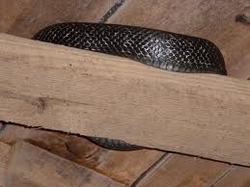|
|
|
This page is devoted to my beloved wildlife and rescues!
"Water dries, mud and blood wash off, wounds heal, scars and bruises fade...what we do for the animals lasts forever." Donna E. "Dee' Penney, Viperrescuer1, 2004
VIPERRS (Valkyrie's Interstate Predator Emergency Reptile Rescue Service) is a free rescue service which I operate in my spare time. I go anywhere, rescue almost any reptile which is wild...from non-venomous snakes of all kinds to the more exotic, like escaped pet constrictors, and, of course, my first love-alligators. Visit this page regularly to see what I've been rescuing lately.
|
|
|
|
Southeastern Reptiles Series is Here! This quarter-The Alligator Snapping Turtle!
CAUTION! ALLIGATOR SNAPPING TURTLES HAVE LARGE HEADS, LONG NECKS, AND SHARP HOOKED BEAKS THAT CAN INFLICT SERIOUS BITES. DO NOT ATTEMPT TO LIFT THEM OUT OF THE WATER AND/OR TEASE THEM. THEY ARE A PROTECTED SPECIES IN THE U.S.A. AND MANY STATES. The Alligator Snapping Turtle (Macrochelys temminckii) is a large, almost totally aquatic turtle found all over the southeast, and as far north as Illinois, Indiana, and Iowa. They inhabit fresh or slightly brackish water in lakes, rivers, swamps and sloughs. Most of them, except for the females laying eggs, stay in the water.
They are a large turtle, with a shell between 16-to-36 inches long. They weigh up to 150 pounds. The upper shell, or carapace is brown or gray, and has three "keels" running lengthwise, one in the middle, and one on each side, with a row of scutes running around the lower edge. The bottom, or plastron, is smaller and a grey color. Their head is large, with a long neck and a powerful hooked beak which is very strong. Their tail is long. These turtles have a white wormlike structure in their mouth which acts as a lure to attract prey, which ranges from fish to invertebrates like crayfish, as well as smaller turtles. They will alsoeat small mammals. Alligator snapping turtles become sexually mature between 11-13 years of age. Courtship runs from February to April, with breeding taking place underwater. The females lay from 16 to 52 eggs in a nest on land in May or June, and the eggs hatch 12 weeks later. Eggs and babies are predated upon by raccoons. Some females lay only every other year, which may contribute to their decline. In captivity, they may live for 60 years, but in the wild, it is considerably less. This species ir rare and declining all around its range due to water pollution, habitat loss, and human harvesting. In most staes in their range, they are a protected species, as well as being Federally protected. These are awesome and beautiful animals which deserve our respect and admiration.
|
|
RESCUES GALORE!
Rescues here at VIPERRS are picking up since the first of the year-primarily snakes-since we have been having unusual stretches of warm weather. Most of the large snakes are still in hiding, but the smaller ones, primarily rat snakes under three feet long, warm up quickly and get out and about to forage for food and better shelter. And we have had no calls on alligators, since they are laying up in their dens. Since January 1st, we have relocated a total of seveteen rat snakes, three water moccasins, two copperheads, and eight black racers. We also rescued and relocated four turtles (this is through Feb. 14th!) . Please remember-if you are out and about in your yards doing late raking, trimming, and mowing, watch out for snakes! Stay away from brush piles, and other hiding areas, and be careful when bringing wood in for your fireplaces-log stacks are excellent hiding places for snakes! Caution your children to watch out when playing outside, and to come tell an adult if they see a snake.
www.enature.com
Winter is here-but isn't too cold!
Fall is gone, and Winter is here-to a point! This year has been unusually warm, with many stretches of warmth that have led to many problems for the animals-they are having trouble staying in hiding when the plants are in bloom and prey in moving around. Which brings us the next point. Snakes are beginning to crawl around looking for just that snack to tide them over. They favor southern exposures, which warm up nicely in the sunshine and often lay up in weedy areas of yards or woodpiles, brush piles, leaves, and garages that are left open. If you have a woodpile, please do not locate it on a patio or next to a door-this practically guarantees a snake will show up when they are least welcome! Let your children know NEVER to put their hands or feet anywhere they cannot see! Try to remind them that they are NOT to touch ANY snake they see, and stay out of piles of leaves in the yard. This goes for adults cleaning up these areas, also-you never know where a snake may show up. A gentleman recently was struck twice by a water moccasin while raking leftover leaves in his yard, and nearly died! It is time to be sure the bird feeders are full, and and suet and seed for the birds is readily available. Enjoy the winter, but remember-SAFETY FIRST. STOP, LOOK, and LISTEN for anything out of the ordinary! Be Safe, and enjoy the cooler weather!
|
 Black Rat Snake in a Barn!
Black Rat Snake in a Barn!
|
|
|
|


